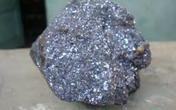






According to data from Chinese customs, the export situation is as follows: In March 2025, the export of refined lead decreased by 66.57% mom and declined by 34.38% yoy. The combined export volume of refined lead and lead products increased by 8.83% yoy on a cumulative basis. The import situation is as follows: In March 2025, the combined import volume of refined lead and lead products increased by 197.96% year-on-year on a cumulative basis.

In March, with the Spring Festival factor eliminated, the lead market showed a pattern of increased supply and demand. Primary lead and secondary lead smelting enterprises resumed production in a concentrated manner, coupled with the commissioning of new secondary lead production capacity, resulting in a monthly increase in lead ingot supply of over 50%. As lead-acid battery enterprises returned to normal production, the purchasing demand for lead ingots also increased correspondingly. At the beginning of March, the National People's Congress and the Chinese People's Political Consultative Conference were convened in China, and a number of policies to boost the economy were proposed. These measures alleviated the market's concerns about the U.S. imposing additional tariffs. Non-ferrous metals in the Shanghai market generally turned red, and Shanghai lead exhibited a strong oscillation trend, reaching a high of 17,805 yuan per ton within the month, the highest level in nearly three months. The import window opened briefly, and overseas lead ingots began to arrive at Chinese ports in mid-March. However, in late March, as expectations of U.S. tariff increases intensified and the traditional off-season for lead consumption approached, lead prices reversed and declined, almost giving back all the gains since March. The import conditions no longer held.
April is traditionally the off-season for the lead-acid battery market in China, mainly due to the weakening of replacement demand in the electric bicycle and automotive battery markets. According to SMM, some lead-acid battery enterprises reported a decline in new orders. In order to reduce finished product inventory, production enterprises are considering reducing output and inventory. Additionally, during the Qingming Festival, some downstream battery production enterprises suspended operations for holidays, resulting in a temporary reduction in lead consumption. Moreover, in early April, due to a significant drop in LME lead prices, the lead Shanghai-London ratio expanded, and the import window for lead ingots was on the verge of opening. If the country of origin is a zero-tariff agreement country, the import window for refined lead has already opened. However, the actual import situation of lead ingots still needs to be monitored through data released by Chinese customs.

Due to tight raw material supply and high prices, domestic lead costs are relatively high. In particular, the firm prices of metals such as antimony and tin have directly led to an increase in lead alloy prices. Recently, domestic lead ingot and lead product exports have been at a disadvantage.
For queries, please contact Lemon Zhao at lemonzhao@smm.cn
For more information on how to access our research reports, please email service.en@smm.cn


